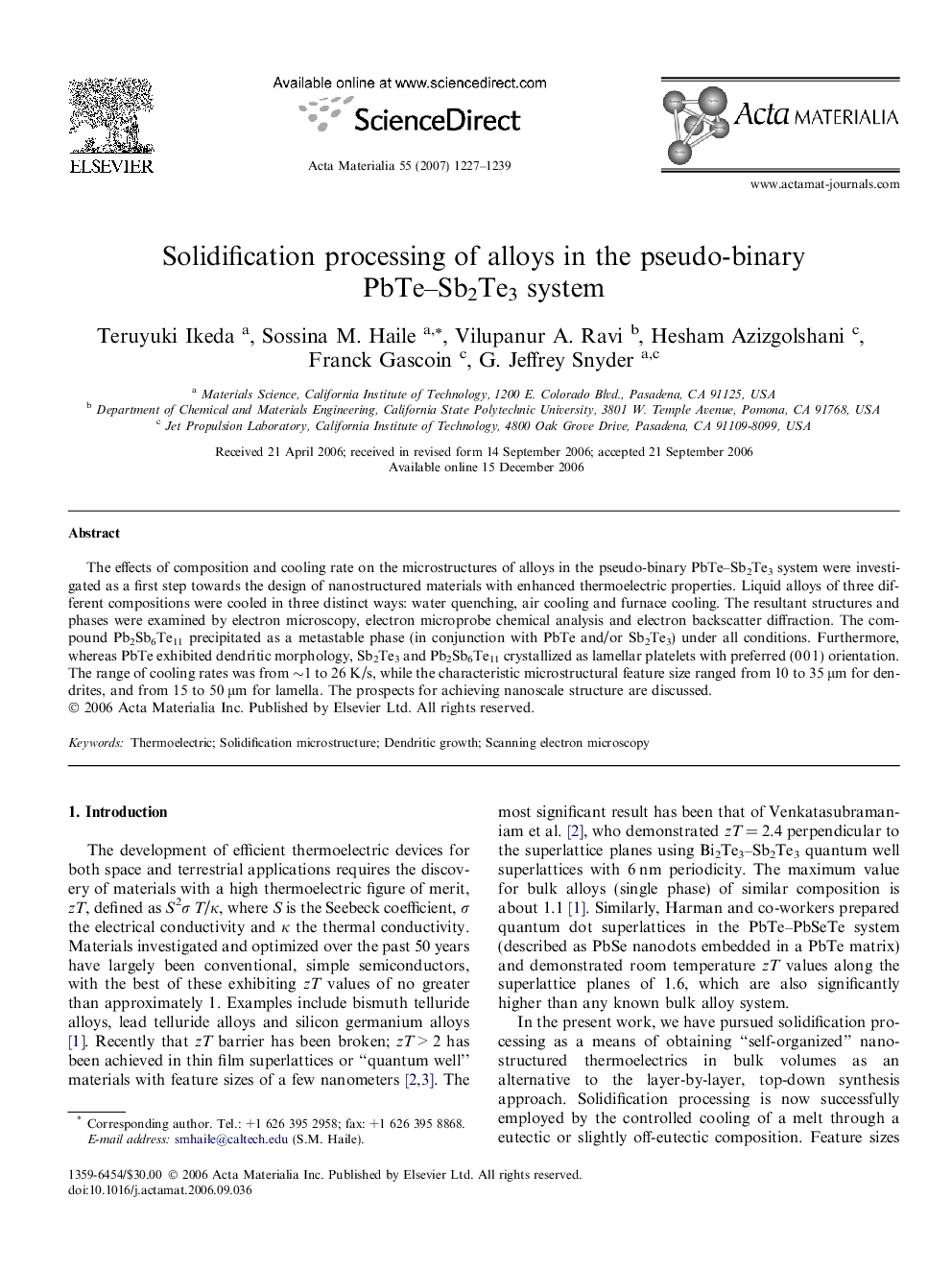| Article ID | Journal | Published Year | Pages | File Type |
|---|---|---|---|---|
| 1449857 | Acta Materialia | 2007 | 13 Pages |
The effects of composition and cooling rate on the microstructures of alloys in the pseudo-binary PbTe–Sb2Te3 system were investigated as a first step towards the design of nanostructured materials with enhanced thermoelectric properties. Liquid alloys of three different compositions were cooled in three distinct ways: water quenching, air cooling and furnace cooling. The resultant structures and phases were examined by electron microscopy, electron microprobe chemical analysis and electron backscatter diffraction. The compound Pb2Sb6Te11 precipitated as a metastable phase (in conjunction with PbTe and/or Sb2Te3) under all conditions. Furthermore, whereas PbTe exhibited dendritic morphology, Sb2Te3 and Pb2Sb6Te11 crystallized as lamellar platelets with preferred (0 0 1) orientation. The range of cooling rates was from ∼1 to 26 K/s, while the characteristic microstructural feature size ranged from 10 to 35 μm for dendrites, and from 15 to 50 μm for lamella. The prospects for achieving nanoscale structure are discussed.
